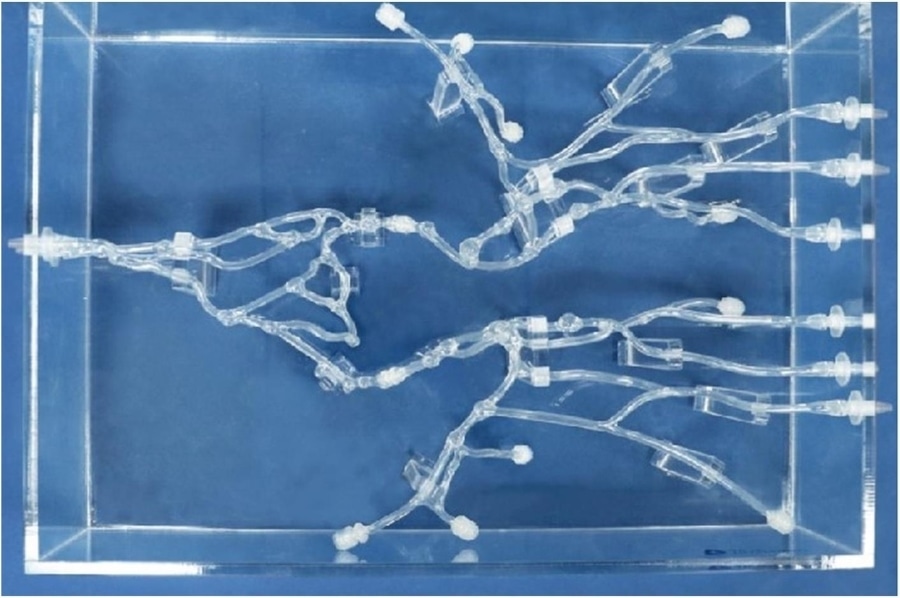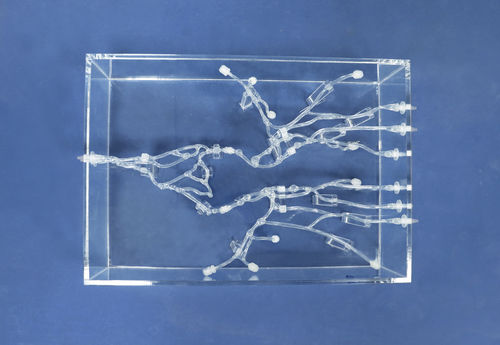
#Industry News
What is Retroperitoneal Lymphangioma?
Retroperitoneal Lymphangioma
Retroperitoneal lymphangioma is a rare, benign tumor that arises from the lymphatic system. It predominantly occurs in children, but cases have also been reported in adults. This industry knowledge article aims to provide a comprehensive overview of retroperitoneal lymphangioma, including its definition, etiology, clinical presentation, diagnostic approaches, and current treatment options.
1. Definition and Etiology:
Retroperitoneal lymphangioma is a type of lymphatic malformation characterized by the abnormal proliferation of lymphatic vessels in the retroperitoneal space. The exact cause of retroperitoneal lymphangioma remains unclear, but it is thought to develop during embryonic development when the lymphatic system fails to form properly, leading to the formation of cystic masses.
2. Clinical Presentation:
Retroperitoneal lymphangiomas are often asymptomatic and may be incidentally discovered during radiological investigations. However, when symptoms do occur, they may include abdominal pain or discomfort, a palpable mass in the abdomen, urinary or bowel dysfunction due to compression, and signs of fluid accumulation, such as ascites.
3. Diagnostic Approaches:
Several imaging techniques are employed to diagnose retroperitoneal lymphangiomas, including ultrasound (US), computed tomography (CT) scan, and magnetic resonance imaging (MRI). These imaging modalities help in visualizing the cystic nature of the tumor, its size, location, and relation to adjacent structures, aiding in treatment planning.
4. Treatment Options:
The management of retroperitoneal lymphangioma depends on various factors, including the patient's age, overall health status, symptoms, and tumor characteristics. Treatment approaches can range from observation and conservative management to surgical interventions.
5. Observation: Asymptomatic or small lymphangiomas may be monitored closely with regular imaging to evaluate any changes in size or symptoms.
6. Sclerotherapy: This minimally invasive procedure involves injecting a sclerosing agent, such as ethanol or bleomycin, into the lymphangioma to induce sclerosis and subsequent shrinkage.
7. Surgical Excision: Large or symptomatic retroperitoneal lymphangiomas often require surgical removal. Complete excision of the tumor is challenging due to its infiltrative nature and potential involvement with vital structures. In such cases, surgical debulking or partial resection may be performed to relieve symptoms and reduce the tumor burden.
8. Laparoscopic or Robotic-assisted Surgery: Minimally invasive surgical techniques may be employed in select cases to reduce postoperative morbidity and improve recovery times.
9. Prognosis and Follow-up:
The prognosis for retroperitoneal lymphangioma is generally favorable, especially when diagnosed and managed early. However, the risk of recurrence remains, and diligent long-term follow-up is necessary to detect any tumor regrowth or the development of associated complications.
Retroperitoneal lymphangioma is a rare tumor arising from the lymphatic system in the retroperitoneal space. While predominantly seen in children, it can develop in adults as well. Accurate diagnosis through imaging techniques and careful consideration of symptoms and tumor characteristics form the basis for treatment decision-making. A multidisciplinary approach involving pediatric surgeons, radiologists, and oncologists is crucial in ensuring optimal management outcomes for patients with retroperitoneal lymphangioma. Ongoing research and advancements in treatment modalities continue to improve patient care in this challenging condition.





